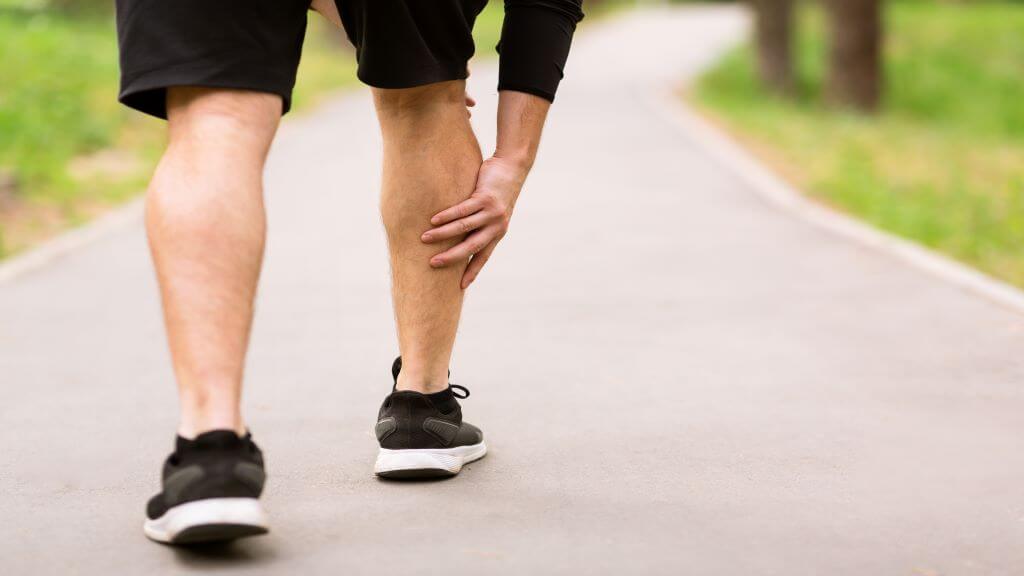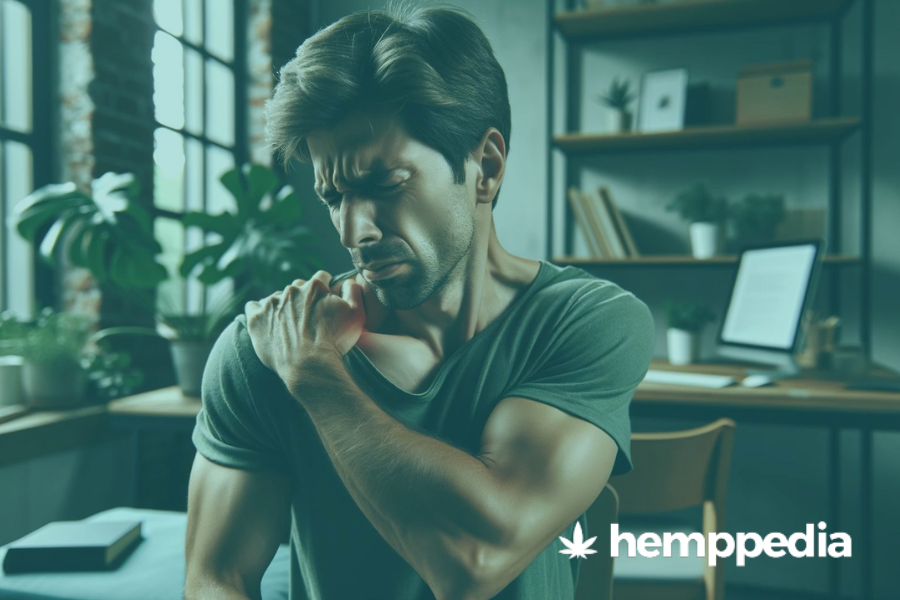Introduction
Muscle spasm is an unintentional contraction of muscles. Do cannabis cannabinoids help in providing relief or solutions? Let us discuss this in this article.
Thighs, calves, foot arches, hands, arms, neck, shoulder blades, and rib cage are the most common areas affected by muscle spasms. These contractions could be sensed in an individual muscle, entire muscle group, or selected muscle fibers.
Calf cramps are also known as Charley horses. These cramps last for a few seconds to minutes, or continuous but the pain could be debilitating. Some of the other related terms to refer to muscle spasms are muscle twitch, cramps, spasticity, and muscle contractions.
This article intends to discuss the following aspects of muscle spasms and if the applicability of cannabinoid-based treatments could provide relief to affected populations.
Top causes for muscle spasms
- In most common cases, muscle spasms occur due to relentless exercise and sports.
- Insufficient stretching, exercising in heated temperatures.
- Mineral deficiencies including potassium, calcium, and sodium.
- Pregnancy
- A recent study1 points out causes such as electrolyte disturbances, neurological disorders in people over the age of 60 years, compression of nerve roots or compressed arterial vessels.
- Consumption of certain medications such as diuretics for specific conditions including, high blood pressure, kidney failure, heart attack, and strokes could lead to muscle spasms.
- A 2008 study2 details that disabling symptoms such as muscle stiffness, spasms, muscle cramps, pain, tremor is associated with Multiple Sclerosis (MS) a chronic and disorder of the Central Nervous system. Moreover, of all the symptoms, 90% of MS-affected patients are troubled with muscle spasms and spasticity.
How to treat muscle spasms?
Firstly, analyzing the underlying cause for muscle spasms is crucial. Only then appropriate treatment could be undertaken. We have seen above that muscle spasticity could occur because of two broad reasons. They are:
- Exercise-induced
- Neurological conditions including MS, amyotrophic lateral sclerosis(ALS), and spinal cord injury.

- Treating exercise-induced spasms may be handled with the help of stretching and massages. These could help relax the twisted muscles or cramps.
- Similarly, heating packs for relaxation and ice packs to numb pain areas could provide temporary relief.
- Prescribed pain medications are also commonly practiced to treat spasms.
- For patients affected with spasticity due to underlying neurological conditions, antispasmodic treatments are recommended. This helps reduce elevated muscle tone.
- But, study3 says that these treatments are only partially effective or ineffective, as patients face intolerable side effects.
As a result, patients choose to self-medicate with cannabis. Anecdotal evidence suggests that cannabis extracts are beneficial to control MS symptoms that include pain and spasticity.
Role of Cannabis in treating muscle pains
- A 2012 Study4 reports on results from a UK based randomized trial. Here, adult patients who suffered from muscle spasms, muscle stiffness, and other associated pains typical of MS were studied. They were assigned cannabis extracts ( THC) daily and compared with a placebo for 12 weeks. The trial concluded that cannabis extract could be useful for treating muscle problems typical of MS and provided effective pain relief.
- Furthermore, a four-arm cross-sectional study among patients with mixed neurological conditions, including MS and spinal cord injury, were administered THC, CBD, THC: CBD, and placebo. Observations were: (a) significant improvements in spasticity in the THC scale. (b) a reduction in the severity in all three cannabinoid conditions.
- A noteworthy mention from a review study is that most clinical trials concerning multiple sclerosis and treatments with cannabis have all dealt with whole-plant extractions. The THC: CBD ratio varies according to strains such as 1:1, 2:1, and 3:1.
- A 2009 study6 stated that combined THC and CBD extracts were generally considered to be well-tolerated. These combined cannabinoid therapies not only provided symptomatic relief but also reduced intoxication and other side effects.
- To sum up, investigations from several studies unanimously report that cannabis therapy has been effective for treating spasticity, in most cases, symptom reduction in multiple sclerosis (MS).
Best cannabis strain for muscle spasms.
Cannabis breeders combine the best features from Sativa and Indica strains to create a new hybrid that could generate desired results. Hence, the resulting new variety could either be a perfect blend of both parents or a dominant hybrid of Sativa or Indica. ( whichever is the dominant parent)
The effects of the hybrid cannabis strains vary according to the THC: CBD ratio. Hence, they are used for several medicinal and therapeutic purposes to treat symptoms like depression, anxiety, paranoia, chronic pain, etc.
According to a survey from a study,7 medical cannabis users preferred Indica strain to treat symptoms including neuropathy, spasticity, seizures, insomnia, and joint pain.
Effects of medical marijuana-based strain and route of administration study,8 demonstrate that symptoms such as nausea and spasm could be affected by various methods of cannabis administration.
For example, Afghan kush, a popular indica strain, is rich in THC and CBD but known for its high CBD content. Their psychoactive properties and their medicinal effects help relieve pain in chronic cases and pain caused by leg cramps.
CBD benefits for muscle spasms
- A significant reduction in the frequency of spasm was observed in THC and CBD combinations and also while THC alone was administered. But no improvements were observed while on CBD alone, reports a review study.
- Similar observations are noted from a 2003 mouse model study of multiple sclerosis. THC alone caused a rapid onset of muscle relaxation and pain relief but CBD alone caused no inhibition of spasticity. Hence, THC is the active ingredient in producing anti-spasticity benefits.

Which form of CBD works for muscle spasms?
Hemppedia compiles a wealth of information about various disease conditions and the applicability of cannabinoids in lifestyle lead disorders. For example, the potential of CBD in supporting combat sports professionals, athletic professionals in managing concussions, neurological complications, musculoskeletal disorders, pain management, and much more is mention-worthy at this juncture.
In each of these disease conditions, the form in which an individual prefers to ingest cannabinoids into their system might vary from person to person. Similarly, every individual may need different dosages and potencies.
Currently available studies provide a little or sparing reference to any specific form of CBD for treating muscle spasms, cramps, or muscle-related pain. Also, most clinical investigations consider the use of THC and CBD or THC alone.
For example, a study9 informs that several patients reported a decrease in muscle spasms after smoking marijuana.
But this study has inferred results only based on smoking medicinal marijuana.
Contrastingly, findings from a recent study10 establishes that transdermal application of CBD Oil showed compelling improvements in pain and other disturbing symptoms. But in patients with peripheral neuropathy.
There are marked differences in the nature, causes, and treatment of multiple sclerosis and peripheral neuropathy. But there are several common symptoms in both neurological disorders.
Ultimately, users who are more comfortable with CBD could try full-spectrum CBD oils or balms for transdermal applications to relieve pain from specific points. And combine sublingual administration or CBD capsules for overall pain management and well-being based on individual needs.
CBD patches provide positive effects in decreasing pain-related conditions including, pain caused by inflammation, localized pain, muscle spasms, multiple sclerosis, chemotherapy, lower back pains, injury, etc.
What are the side effects of using cannabis products?
Generally, we are aware that the use of psychoactive cannabinoids especially THC for managing anxiety, stress, pain could lead to certain side effects. These could be mild to severe depending on the condition, dosage, and several other factors.
- Dizziness, dry mouth, nausea, diarrhea, fatigue, attention disorder, balance disorder, idleness or dreamy, confusion, lack of energy, urinary tract infection.
- A 2012 Study11 points out nervous system disorders and gut problems as the most common side effects but not severe.
Summary
- If muscle cramps are not triggered by any neurological condition, then in most cases of they tend to fade on their own over.
- Studies have shown that 90% of MS (multiple sclerosis) patients face muscle spasms, muscle stiffness, spasticity, cramps, and pain symptoms that are difficult to treat.
- THC: CBD combinations and THC independent of CBD provided relief and reduction in the frequency of spasm.
- Conventional medications currently prescribed to MS patients are mostly ineffective, expensive, and come with dangerous side effects. That is one of the driving reasons for patients to self-medicate cannabis therapies.
- Patients affected with MS, muscle spasticity, neurological conditions, or any movement associated disorders are indeed looking forward to improved knowledge of cannabinoids. It could also help to enhance the therapeutic benefits of specific cannabinoids.
References
- Bordoni B, Sugumar K, Varacallo M. Muscle Cramps. Updated 2021 Feb 7 In: StatPearls Treasure Island (FL): StatPearls Publishing; 2021 Jan [↩]
- Malfitano AM, Proto MC, Bifulco M. Cannabinoids in the management of spasticity associated with multiple sclerosis. Neuropsychiatr Dis Treat. 2008;4(5):847-853. doi:10.2147/ndt.s3208 [↩]
- Malfitano AM, Proto MC, Bifulco M. Cannabinoids in the management of spasticity associated with multiple sclerosis. Neuropsychiatr Dis Treat. 2008;4(5):847-853. doi:10.2147/ndt.s3208 [↩]
- BMJ-British Medical Journal. “Cannabis extract eases muscle stiffness typical of multiple sclerosis, study suggests.” ScienceDaily. ScienceDaily, 9 October 2012 [↩]
- Nielsen, S., Murnion, B., Campbell, G., Young, H. and Hall, W. (2019), Cannabinoids for the treatment of spasticity. Dev Med Child Neurol, 61: 631-638 [↩]
- Lakhan, S.E., Rowland, M. Whole plant cannabis extracts in the treatment of spasticity in multiple sclerosis: a systematic review. BMC Neurol 9, 59 2009 [↩]
- Daniel D. Pearce, Katherine Mitsouras, and Kristopher J. Irizarry, Discriminating the Effects of Cannabis sativa and Cannabis indica: A Web Survey of Medical Cannabis Users, The Journal of Alternative and Complementary Medicine 2014 20:10, 787-791 [↩]
- Corral, Valerie. (2001). Differential Effects of Medical Marijuana Based on Strain and Route of Administration. Journal of Cannabis Therapeutics. 1. 10.1300/J175v01n03_05 [↩]
- Mack A, Joy J. Marijuana as Medicine? The Science Beyond the Controversy. Washington (DC): National Academies Press (US); 2000. 7, MARIJUANA AND MUSCLE SPASTICITY [↩]
- Xu DH, Cullen BD, Tang M, Fang Y. The Effectiveness of Topical Cannabidiol Oil in Symptomatic Relief of Peripheral Neuropathy of the Lower Extremities. Curr Pharm Biotechnol. 2020;21(5):390-402 [↩]
- BMJ-British Medical Journal. “Cannabis extract eases muscle stiffness typical of multiple sclerosis, study suggests.” ScienceDaily, 9 October 2012 [↩]





